Grade:
How to sign "grade" in ASL.
The concept of "grade" can be signed a variety of ways in ASL depending on your
meaning and your preferences. Many people prefer to fingerspell "grade."
Also, it is common for even skilled signers to use one version of "grade" to
mean both a "letter grade" and "a grade in school." It is not worth
arguing about. I'll show you my recommendations but you should sign
"grade" however your local Deaf sign it. I do encourage you however to
think about the roots of each version of the sign.
If you mean grade as in "What grade are you in?" you can use the version of
"grade" that puts a "G" hand onto the non-dominant palm. You may also
touch the "G" hand to the palm twice (down, up, then down) on the palm of your hand.
Think of the movement you use for the sign for "school." This version of "grade"
is an initialized form of "SCHOOL."
GRADE / level in school:
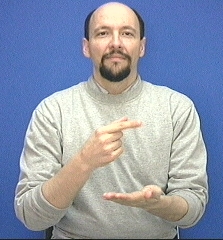
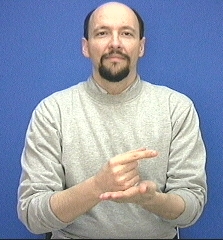


GRADE as in "What grade did you get on your paper?" Or, "I have to turn
in grades tomorrow."
If you were talking about the grade on your paper you could also use the
sign "number" (which can be used to mean "score.")
This version of "grade" is an uninitialized version of one of the signs for "LIST."
Also, you may wish to compare this version of grade to the sign:
ASSIGNMENT
GRADE:
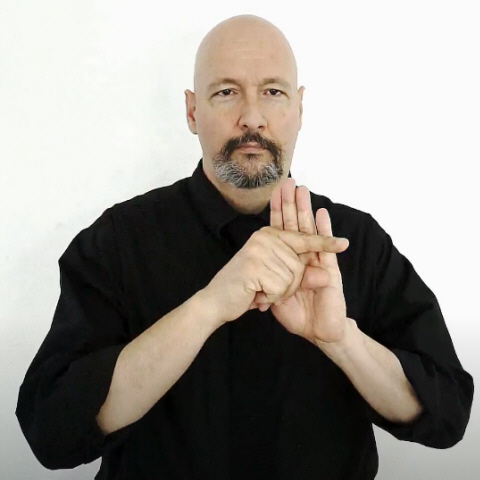
See:
"Fourth grade"
https://youtu.be/dGwB8P_XtOE
If you mean "grade" as in "to grade an assignment" or "I need to grade papers tomorrow"
you should use the sign that means "cancel, correct something, criticize,
critical, or critique."
Use the tip of your index finger to draw an "X" on the palm of your
non-dominant hand.
If you are right handed start near the top right of the left-palm and "draw" a
line with the tip of the finger moving toward the bottom left. Then "draw" a line from the top left of the palm toward the bottom right of the
palm. While many signers "do" touch the palm it is not required to make contact.
During high speed signing it is very common to make this sign without contact.
CANCEL / CORRECT-something / CRITICIZE / grade an assignment:
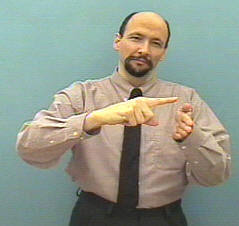
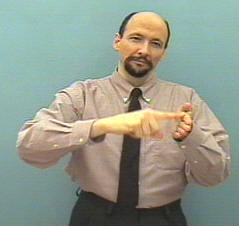
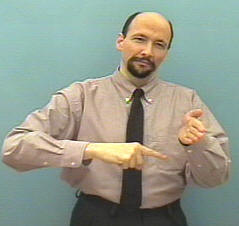
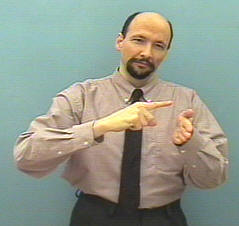
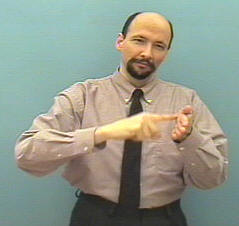
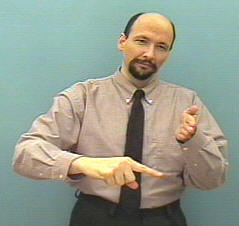
For an animation, see: CANCEL
(animation)
You may also see "grade" expressed using the sign typically labeled as "CHECK"
-- as in "I need to check my student's papers before tomorrow."
CHECK: The idea behind this
sign is to draw a "check" mark on your hand
The actual movement is very quick and relatively straight. The tip of the
right index finger quickly moves down and forward, glancing off the upturned
left palm.
CHECK / investigate:
.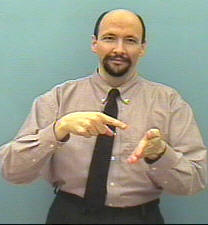
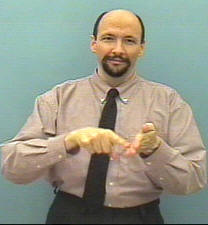

Notes:
Also see:
CANCEL / criticize / to-CORRECT
CHECK
/ investigate / research
GRADUATE / graduation
LIST
NEGATIVE
SCHOOL
A sign that looks very similar to the "grade" sign is the sign for "negative."
NEGATIVE / MINUS / CON-(a negative)
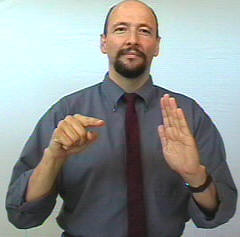
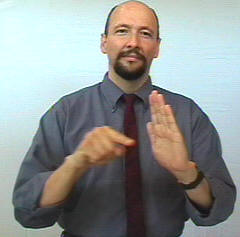
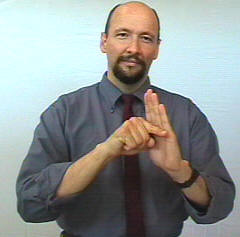
A friend name Lyn writes:
I see in your dictionary that the sign for 'grade' (as a grade on a student's paper) can also mean 'minus.'
I thought that minus/negative was done with an index finger while grade was done with a G hand shape. Am I wrong about that?
Response from Dr. Bill:
Lyn,
You bring up a good point. I'm going to adjust the "grade" entry in the
dictionary to better reflect the small differences in the two signs. Thanks.
The minus/negative/con sign tends to use a "1-hand-(bent-version)"
wherein the wrist
is straight, the index finger is straight, the large knuckle of index finger
(the metacarpophalangeal joint) is slightly bent, the knuckle (interphalangeal
joint) of the thumb is bent -- causing the thumb to wrap a bit onto the
curled middle-finger.
The "GRADE" sign tends to use a "G"-hand as the dominant-hand
handshape.
Interestingly, we might occasionally see some "coarticulation" /
assimilation going on if/and when we sign "1st Grade." The "1" hand of
the sign "1st" may carry over to the "GRADE" sign.
Notes on handshapes:
"1-hand" = wrist is straight, index finger is straight, large knuckle of
index is not bent, thumb is slightly wrapped
"1-hand-bent-version"-wrist is straight, index finger is straight large
knuckle of index finger is bent.
"G-hand"-(knuckles-forward-version)-index finger points mostly to
non-dominant side, large-index-knuckle is bent, palm is pointing to
non-dominant bicep area, thumb is parallel to index-finger, wrist is
straight.
"G-hand"-(knuckles-up-version)-thumb is parallel to index finger, flat of
fingernail is pointing up, wrist is slightly cocked back (so as to not look
like a Q).
"G-hand-open-thumb-version"-similar to "knuckles forward version" but the
thumb points upward or somewhat upward.
Lyn writes:
I thought that the minus/negative sign was a straight index finger (not bent at any knuckle) to represent a 'minus-sign.'.
Thanks for all the information, i will surely take it into account and will hope to remember it in the future!
Gosh there is SO MUCH to learn if one wants to understand things beyond the basics, huh?
Doing MINUS with a "1" hand that has a totally straight large knuckle (metacarpophalangeal joint) would cause you to have to either bend the wrist excessively or raise the elbow out to the side. A modified "G" hand that has a bend of the metacarpophalangeal joint (and a slightly bent interphalangeal thumb joint) makes the sign faster and easier to do. In "formal" or citation (dictionary) examples of MINUS we are likely to see a straighter index knuckle -- but in faster more casual signing we are likely to see the large knuckle bent a bit (more like a "G" with a wrapped thumb). Really it is a matter of "something" has to bend in order to do this sign fast without stress on the ligaments and the question is "Is it easier to bend the large knuckle of the index finger -- or is it easier to bend the whole wrist?" (Or is it easier to raise the elbow.) Personally, I prefer to just bend my large knuckle a bit:
Negative / minus:

Oh sure -- we "do" sometimes do the sign for "negative" or "minus" with a straight knuckle and raised elbow.
If we do sign MINUS using a totally straight wrist and straight metacarpophalangeal joint of the index-finger (by raising the elbow and using a large inward sweeping movement) -- it can mean "a HUGE negative!" (Bad aspect of a thing or situation).
[graphic needed here of "huge-NEGATIVE!"]
Question:
What about "first" grade? Would you use the "wrist twist" version of
"1st"?
And would you do that same "twist" version for other grades as well?
Answer:
While you may see some variety throughout the Deaf Community on the
ordinal counting of the grades (first, second, third...) -- in general I
recommend the "twist" version of "1st" for the concept of "1st grade." I
recommend the "twist" version of the ordinal numbers up through 9th
grade. Beyond that point I do the cardinal number followed by a
fingerspelled "TH."
See: "Fourth grade"
https://youtu.be/dGwB8P_XtOE
*
Want to help support ASL University? It's easy:
DONATE (Thanks!)
* Another way to help is to buy something from Dr. Bill's "Bookstore."
* Want even more ASL resources? Visit the "ASL Training Center!" (Subscription
Extension of ASLU)
* Also check out Dr. Bill's channel:
www.youtube.com/billvicars
You can learn American Sign Language (ASL) online at American Sign Language University ™
ASL resources by Lifeprint.com © Dr. William Vicars